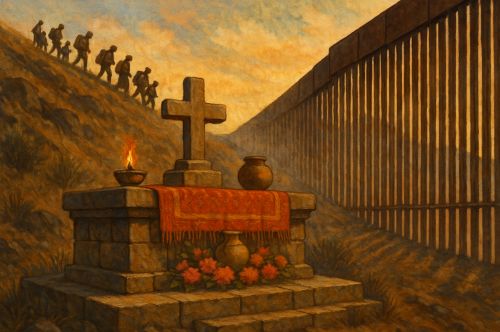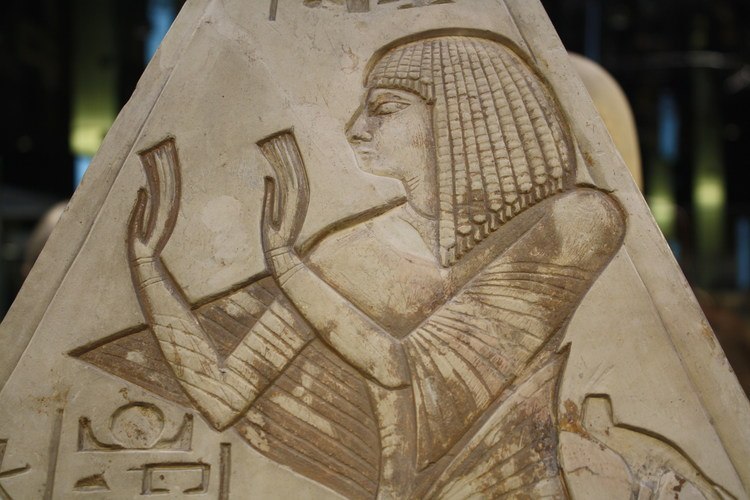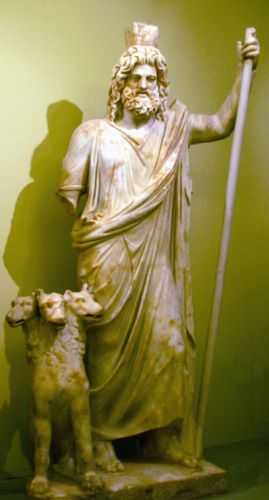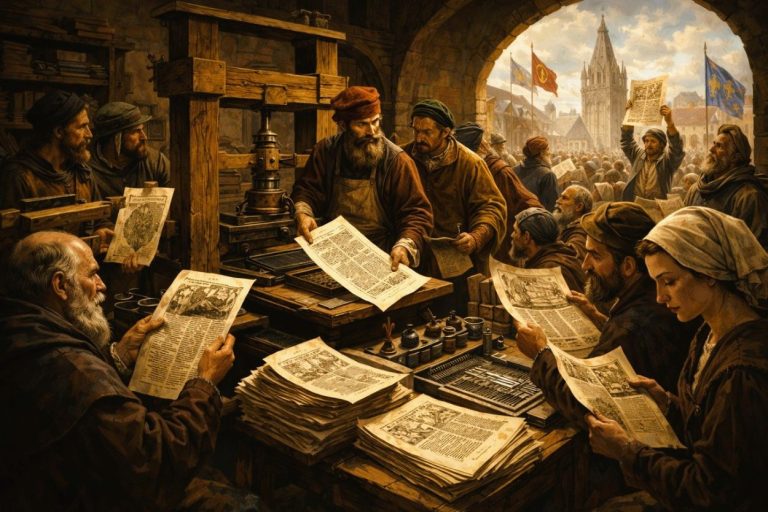

Religion was the first passport. Without the sacred credential, there was no true political inclusion. Migrants did not simply negotiate.

By Matthew A. McIntosh
Public Historian
Brewminate
Introduction: Faith as the First Gate
In the ancient world, immigration was rarely a matter of crossing an abstract political line. It was a passage into the moral and spiritual order of the host society. Religion, in this context, was not merely a private matter of conscience; it was the framework by which legitimacy, loyalty, and belonging were measured. To arrive in a foreign land meant entering its sacred geography, where the gods themselves presided over questions of inclusion or exclusion.
In places like Rome, Egypt, and the kingdoms of the Hellenistic age, religion shaped immigration policy in ways both subtle and coercive. At times it offered pathways to integration, at other moments it erected boundaries more formidable than any wall. Ancient rulers recognized that controlling religion meant controlling the terms of identity. A political border could be porous; a sacred boundary was not.
Rome: The Civic Cult and the Price of Belonging

Rome’s vast imperial reach brought countless peoples into its orbit. Its immigration policy, however, cannot be understood without recognizing the role of the religio Romana, the state religion that defined civic identity. For newcomers, acceptance into Roman society often hinged on their willingness to participate in public cults, festivals, and sacrificial rites that honored both the traditional gods and the genius of the emperor.1 This was not merely symbolic. Refusal to engage could be interpreted as treason, a rejection of the political community itself.2
Yet Rome was not a purely rigid system of exclusion. It could display remarkable religious adaptability when it served imperial interests. The adoption of the Phrygian goddess Cybele during the Second Punic War is a striking example. Her cult, once foreign, became interwoven into Rome’s religious fabric, creating space for Phrygian migrants to be viewed not as outsiders but as participants in the civic cult.3 This kind of incorporation served a political purpose: religious inclusion could help secure loyalty.
That flexibility, however, had boundaries. Groups seen as threatening social order were treated harshly. The suppression of the Bacchic cult in 186 BCE stands as one of the starkest cases, where the Senate ordered mass arrests and expulsions of both citizens and immigrants tied to the rites.4 The charge was not simply moral corruption but the undermining of Rome’s religious and civic structure.
Rome’s model thus reveals the dual role of religion in immigration policy: it could integrate newcomers through strategic assimilation of their deities, or it could exclude them violently if their practices were perceived as incompatible with the sacred-political order.
Egypt: Sacred Geography and the Stranger in the Land

In pharaonic Egypt, religion framed immigration on a cosmological level. The Nile Valley was not merely fertile land but a sacred domain, part of the ma’at, the divine balance that the pharaoh was charged to maintain. Immigrants entered this space under religious terms that tied their presence to the preservation of cosmic order.5
The temple system often served as the intermediary between foreign communities and Egyptian society. Temples were economic hubs, controlling land and resources, and they frequently absorbed foreign labor into their networks.6 Artisans, scribes, and soldiers from abroad could be integrated by serving in temple estates, which in turn aligned them with the religious and political order.
Those who resisted assimilation into Egyptian religious life often found themselves pushed to the margins, sometimes living in frontier towns or serving in military garrisons far from the cultural and sacred centers.7 While Egypt’s religious system could absorb the stranger, it could also contain and limit them.
The Hellenistic World: Gods in Translation

The Hellenistic kingdoms that emerged after Alexander’s conquests faced the unprecedented challenge of governing vast and religiously diverse populations. Immigration in this context often took the form of Greek settlers moving eastward and non-Greek peoples relocating into newly founded cities. Religion became the central medium for negotiating these movements.
Rulers actively promoted syncretism, blending Greek and local gods to create hybrid cults that could bridge cultural divides. The most famous of these, Serapis, merged aspects of Osiris and Apis with the visual form of a Greek deity.8 Immigrants encountering Serapis could find their own traditions mirrored, easing the cultural transition while reinforcing loyalty to the Ptolemaic state.
Cities like Alexandria became laboratories of religious integration. Here, temples to Egyptian, Greek, and hybrid gods stood side by side. Migrants from across the Mediterranean could find a space for worship that either directly reflected their tradition or adapted it into a new civic cult.9 This made religious participation a form of civic engagement, one that bound immigrants to the urban community.
However, syncretism was not a panacea. In moments of political tension, religious differences could flare into open conflict. The violent clashes between Greeks and Jews in Alexandria during the first century CE reveal how quickly shared space could fracture when civic and sacred legitimacy were contested.10
Even in relatively stable times, the adoption of hybrid cults was often more top-down than organic. Many immigrants engaged with these new gods out of political prudence rather than genuine devotion. This strategic conformity underscores the complex interplay between religion, power, and migration.
Religion as Both Asylum and Exile

Religion in the ancient world had the paradoxical capacity to serve as both refuge and instrument of expulsion. Temples in Greece, Asia Minor, and Egypt were sometimes granted asylia, the right of sanctuary.11 Immigrants and refugees could find safety within their walls, shielded by divine protection.
Yet the same sacred authority could be used to justify banishment. Communities could be uprooted wholesale if their religious identity was seen as incompatible with the host state’s divine mandate. The gods who welcomed could also be the gods who drove out.
Conclusion: Faith at the Threshold
The ancient Mediterranean does not offer a single model for religion’s role in immigration. Rome’s civic cult could embrace foreign gods in one moment and persecute their worshippers in the next. Egypt’s sacred geography could integrate skilled foreigners into its temple economy or consign them to the periphery. The Hellenistic kingdoms could craft religious hybrids to bridge differences, yet these could unravel in times of crisis.
What unites these cases is the reality that religion was the first passport. Without the sacred credential, there was no true political inclusion. Migrants did not simply negotiate with kings or magistrates; they negotiated with the gods at the threshold.
This fusion of theology and policy ensured that ancient immigration was always more than a matter of movement across space. It was a movement into, or away from, the sacred order itself.
Appendix
Footnotes
- Mary Beard, John North, and Simon Price, Religions of Rome, Vol. 1: A History (Cambridge: Cambridge University Press, 1998), 210–214.
- Clifford Ando, The Matter of the Gods: Religion and the Roman Empire (Berkeley: University of California Press, 2008), 122–126.
- Jörg Rüpke, Religion of the Romans (Cambridge: Polity Press, 2007), 65–68.
- Livy, Ab Urbe Condita 39.8–18.
- Jan Assmann, The Mind of Egypt: History and Meaning in the Time of the Pharaohs (Cambridge, MA: Harvard University Press, 2002), 189–193.
- Flinders Petrie, The Religion of Ancient Egypt (Washington, D.C.: Moran Press, 2013), 76–80.
- Barry J. Kemp, Ancient Egypt: Anatomy of a Civilization (London: Routledge, 2018), 245–249.
- Jean Hani, Sacred Royalty: From the Pharaoh to the Most Christian King (Bloomington: Inner Traditions, 2011), 113–116.
- Peter Green, Alexander to Actium: The Historical Evolution of the Hellenistic Age (Berkeley: University of California Press, 1990), 303–308.
- Philo of Alexandria, In Flaccum, 41–52.
- Kent J. Rigsby, Asylia: Territorial Inviolability in the Hellenistic World (Berkeley: University of California Press, 1997), 12–16.
Bibliography
- Ando, Clifford. The Matter of the Gods: Religion and the Roman Empire. Berkeley: University of California Press, 2008.
- Assmann, Jan. The Mind of Egypt: History and Meaning in the Time of the Pharaohs. Cambridge, MA: Harvard University Press, 2002.
- Beard, Mary, John North, and Simon Price. Religions of Rome, Vol. 1: A History. Cambridge: Cambridge University Press, 1998.
- Green, Peter. Alexander to Actium: The Historical Evolution of the Hellenistic Age. Berkeley: University of California Press, 1990.
- Gruen, Erich S. Culture and National Identity in Republican Rome. Ithaca: Cornell University Press, 1992.
- Hani, Jean. Sacred Royalty: From the Pharaoh to the Most Christian King. Bloomington: Inner Traditions, 2011.
- Kemp, Barry J. Ancient Egypt: Anatomy of a Civilization. London: Routledge, 2018.
- Livy. Ab Urbe Condita.
- Petrie, Flinders. The Religion of Ancient Egypt. Washington, D.C.: Moran Press, 2013.
- Philo of Alexandria. In Flaccum.
- Rigsby, Kent J. Asylia: Territorial Inviolability in the Hellenistic World. Berkeley: University of California Press, 1997.
- Rüpke, Jörg. Religion of the Romans. Cambridge: Polity Press, 2007.
Originally published by Brewminate, 08.15.2025, under the terms of a Creative Commons Attribution-NonCommercial-NoDerivatives 4.0 International license.


